BIODIVERSITY
At PT Agincourt Resources (PTAR), we strive to minimize our environmental footprint by identifying, assessing, and managing biodiversity risks within our project areas. Our approach focuses on conserving ecosystems, protecting native species, and restoring habitats wherever possible. We actively engage with local communities, experts, and regulators to ensure our practices align with national and international environmental standards.
Through continuous improvement and responsible stewardship, we aim to contribute to long-term environmental sustainability while supporting the growth and prosperity of the regions in which we operate.
“Biodiversity is the variability among living organisms from all sources, including terrestrial, marine, and other aquatic ecosystems and the ecological complexes of which they are part: this includes diversity within species, between species and of ecosystems.” Earth Summit 1992
KEY POINTS



REGIONAL CONTEXT
The Martabe Gold Mine – operated by PT Agincourt Resources (PTAR) is located to the southwest of the Batang Toru Ecosystem (BTE). The BTE is estimated to cover approximately 150,000 hectares and overlaps with the Batang Toru Key Biodiversity Area (KBA), which covers 170,000 hectares and is an area of significant importance for biodiversity and is spread administratively across the three Tapanuli districts of North Sumatera Province: South Tapanuli, Central Tapanuli and North Tapanuli.
Both the BTE and the KBA comprise predominantly Protected Forest and conservation land, which cannot be developed. Both BTE and KBA also contain limited areas of land which can be used for various development purposes, including mining activity. The mine’s approved current and future area of operations take place only in areas of land where mining activity is permitted.
Since the beginning of operations at Martabe, the mine’s operating footprint has been located outside the original KBA boundary. However, due to a recent extension of the KBA boundary, the new KBA boundary now overlaps with a small part of the mine’s current operations. We have been working together to understand the basis for these changes and any potential impact on Martabe’s future development plans.
The KBA was a boundary formally recognised in 2006 by a partnership of multiple non-governmental conservation organisations including: IUCN, WWF Wildlife Conservation Society, Rainforest Trust, Critical Ecosystem Partnership Fund, Global Wildlife Conservation, Global Environment Facility, Conservation International, BirdLife International, American Bird Conservancy, Amphibian Survival Alliance and Royal Society for the Protection of Birds.
The active footprint of the mine is 600 ha as of December 2024. Of this, 114 ha overlaps with the BTE. The projected life of mine footprint is 918 ha, of which 341 ha will overlap with the BTE, or<0.25% of the total size of the BTE.
[1] Sustainable Management Initiative for Landscape & Ecosystem (SMILE) Batang Toru.
[2] The Batang Toru “Protected Forest” area was a formal designation by the Government of Indonesia and tabled in the Indonesian Ministry of Environment and Forestry decree II in 2014.
[3] The Batang Toru “Key Biodiversity Area” was a boundary formally recognized in 2016 by multiple non-governmental conservation organizations including IUCN and WWF.
MANAGING BIODIVERSITY
At PT Agincourt Resources (PTAR), protecting biodiversity is a core component of our environmental responsibility. From the outset of our operations, we have prioritized the conservation of local ecosystems and species through proactive planning and action.
Comprehensive biodiversity surveys have been conducted throughout the life of the mine to identify and monitor the diverse species present in our surrounding environment. Based on these assessments, we have implemented targeted measures to minimize ecological disturbance and protect natural habitats.
In recent years, our biodiversity efforts have placed a particular focus on the Tapanuli orangutan (Pongo tapanuliensis), one of the world’s rarest great apes. Our initiatives aim to support the long-term preservation of this species through collaborative conservation programs, habitat protection, and scientific research.
Details of these ongoing initiatives are outlined below.
BIODIVERSITY POLICY
BIODIVERSITY ADVISORY PANEL
These scientists have worked to identify, map, and mitigate risks to biodiversity at Martabe. Their work is focused on the best interests of the Tapanuli orangutan, and their advice has already resulted in changes to the way the mine operates. [see Biodiversity Advisory Panel]
All scientists who are members of the Biodiversity Advisory Panel (BAP) work independently to identify, map, and mitigate risks to biodiversity. PTAR has no intervention on the BAP. [BAP Independence Statement]
The work of the BAP informs the continuing strengthening of PTAR’s policies and procedures and annual Biodiversity Action Plans.
The BAP’s advice has also resulted in changes to the location of planned exploration sites as well as the cancellation of a planned Tailings Management Facility, where the land that had been designated for development has now been safeguarded as a corridor to facilitate the movement of orangutans.
We are looking at how we can further strengthen the governance of this group, for which we are seeking input from the IUCN Secretariat.
BIODIVERSITY STRATEGY AND ACTION PLAN
The PTAR Biodiversity Strategy and Action Plan (BSAP) provides an implementation framework for the PTAR Biodiversity Policy and facilitates Board oversight of biodiversity management performance. It comprises seven elements:
- Management Principles
- Goals
- Action Plans
- Operational Controls
- Stakeholder Engagement
- Assurance
- Review and Improvement
The scope of the BSAP includes all activities managed by PTAR including operations at the Martabe Gold Mine and its regional exploration program. It also encompasses biodiversity conservation aspects beyond the direct area of influence of mine operations in recognition of the importance of regional biodiversity conservation.
[see Biodiversity Strategy and Action Plan]
CODE OF PRACTICE BIODIVERSITY MANAGEMENT
Operational controls for biodiversity protection at the Martabe Gold Mine are documented in PTAR Code of Practice Biodiversity Management. These are mandatory requirements for both PTAR and site contractors. The scope of the Code of Practice includes:
- Key accountabilities across the management team
- Avoidance and minimisation of biodiversity impacts in the planning of new projects
- Minimisation of unnecessary clearing and disturbance of habitat
- Management of hazardous wastes
- Protection of animals inhabiting the site
- Restoration of forest habitat on disturbed areas as part of mine closure
- Stakeholder engagement
LAND CLEARING MANAGEMENT
All clearing of vegetation must be preceded by “pre-clearance surveys”—whose methodology and inference designed and controlled by BAP—to prudently identify biodiversity risks and subsequently recommend mitigation practices, as per mitigation hierarchy principle.
This “pre-clearance survey” shall be carried out at least one year before proposed timing of clearing, even for area already approved as an act of prudence. BAP will confirm its formal approval to PTAR’s land clearing plan as a part of PTAR-BAP annual workshops report.
All clearing of vegetation at the mine is strictly controlled by a Land Disturbance Request procedure (“LADR”), which includes:
- Verification that the area being cleared is approved under the AMDAL parameters
- Careful recording of all relevant evidence
- A procedure to immediately halt all clearing activity and coordinate with relevant government agencies to ensure the safety of orangutans, should any orangutans are observed in the immediate area
- Within 24 hours before any clearing of vegetation, a walk-through inspection of the area to be cleared by a team of four mine personnel to check for the presence of species classified as critically endangered (orangutan, tiger, pangolin and hornbill).
If any protected species are found, clearing activities in the vicinity are required to stop immediately and a defined procedure is followed to ensure the protection of the animal(s).
SITE REHABILITATION
At the Martabe Gold Mine, the goal of site rehabilitation is returning the forest habitat of disturbed areas to a similar condition to that existing prior to project development. This specifically includes restoration of habitat for threatened species such as Tapanuli orangutan. PTAR is also committed to the implementation of progressive rehabilitation, meaning that land is rehabilitated as it becomes available. Techniques for the restoration of tropical forest are now well established. The procedure applied at the Martabe Gold Mine is similar to that seen at many mines. The Company maintains a full-time rehabilitation crew and a site nursery to support ongoing rehabilitation works.
Conducted an “Orangutan Impact Assessment Study”
The study involved a full review of previous studies and their results, as well as onsite observations and monitoring surveys. It:
- Concluded that the methodology and inferences used in the past studies on the Tapanuli orangutan population were satisfactory;
- Recognised that while habitat loss is the main potential impact on the Tapanuli orangutans, this impact can be mitigated through the biodiversity management measures implemented during the life of the mine and through the ongoing rehabilitation of land, all of which are measures PTAR is implementing; and
Recommended further ways to enhance the mine’s biodiversity management approach which have since been incorporated into PTAR’s policies and operations.
Third party engagement
As the Member of PT Astra International Tbk., we recognise the value of engaging with third parties to provide more transparency to the efforts the Group is making to protect biodiversity as well as to provide external perspectives and advice to further our efforts. In 2021, our shareholders reached out to the internationally renowned ARRC Taskforce of the IUCN Species Survival Commission Primate Specialist Group (ARRC) to seek their assistance and advice in our efforts to protect the Tapanuli orangutan. We subsequently in early 2022 entered a memorandum of understanding (MOU) with the ARRC to explore how the ARRC could conduct a peer review of data about the Tapanuli orangutan obtained from scientific surveys of the mine and surrounding area carried out by the BAP. As part of this engagement, the ARRC has been working with the BAP to advise on orangutan surveys and on appropriate mitigation measures to minimise impacts on this species.
Local regulations on data sharing limitation have, however, meant that the ARRC has been unable to access the data they would need to carry out their peer review and, therefore, in April 2023, the ARRC decided that they would not extend the MOU.
Notwithstanding this, we remain committed to working with relevant third parties, to obtain advice on how best to minimise the impact of the mine’s operations on the Tapanuli orangutan.
Pursued broader orangutan conservation initiatives
- Improving the habitat for orangutans, including protecting critical conservation areas, reducing fragmentation from roads, establishing effective “corridors” and settlements where there is reduced chance of human-orangutan contact;
- Conducting habitat enrichment with forage plants, including encouraging local community planting schemes;
- Launching programmes to educate, socialise and raise awareness which build the community’s sense of ownership and responsibility for orangutans;
- Promoting alternative economic livelihoods and investing with local communities to maintain orangutan habitats and preventing orangutan deaths or harm; and
- Restoring the surrounding ecosystem in collaboration with the community, academics, and professionals.
Biodiversity Report 2020-2024
ESTABLISHMENT OF A BIODIVERSITY CONSERVATION AREA
PROTECTING TAPANULI ORANGUTAN
In 2017, the orangutan population in the Batang Toru Forest was formally recognized as a unique distinct species, known as the Tapanuli orangutan (Pongo tapanuliensis).
This discovery not only adds to the global biodiversity registry but also underscores the critical importance of the Batang Toru Ecosystem (BTE) as a key conservation area in North Sumatra, Indonesia. This forest is the sole natural habitat of the Tapanuli orangutan, whose population was estimated at only around 800 individuals as of 2017.
At PTAR, we recognize the importance of supporting the long-term preservation of this species and its habitat. Since the establishment of the Martabe Gold Mine, we have prioritized biodiversity protection as part of our commitment to responsible mining. Specific attention for protection of orangutans have been in place from the outset, and over the years we have significantly strengthened our biodiversity management practices, with a particular focus on the Tapanuli orangutan.
Our efforts reflect a broader dedication to environmental stewardship and operating in harmony with the ecosystems where we work.
Surveys and studies
A wide range of surveys and other scientific studies have been carried out over the past 18 years. These include several flora and fauna surveys [see Survey Works], a High Conservation Value mapping exercise, a forest disturbance mapping project and [offset studies]. All these surveys were carried out by reputable consultants, applied established methodology. [see Survey Methodology]
All past surveys/studies serve as the important basis for:
- Multi-layered permitting and licensing (Environmental Impact Assessment Study (or AMDAL) process during which active participation of community, academics, and other relevant stakeholders was welcomed and integral part of the process.
- PTAR to implement industry leading practices to minimise impacts on biodiversity associated with the mine.
As part of PTAR’s 2021 Biodiversity Action Plan, PTAR requested that the BAP carry out an study to look into whether the mine’s activities impact the Tapanuli orangutan.
The Orangutan Impact Assessment Study involved a full review of previous studies and their results, as well as onsite observations and monitoring surveys, and:
- Concluded that the methodology and inferences used in the past studies on the Tapanuli orangutan population were satisfactory;
- Supported the existing initiatives to mitigate loss of habitat as a result of mining activities, which includes PTAR’s ongoing biodiversity management and land rehabilitation work; and
- Recommended further ways to enhance the mine’s biodiversity management approach which have since been incorporated into PTAR’s policies and operations
Establishment of a Biodiversity Advisory Panel
The work of the BAP directly informs the ongoing development of PTAR’s annual Biodiversity Action Plan, which provides a framework for biodiversity management at the mine, as well as a Code of Practice for the implementation of operational controls at the mine to mitigate the impact of the mine on the surrounding environment through the mitigation hierarchy.
The BAP closely monitors the implementation of the Biodiversity Action Plan, and workshops are held at least twice a year to discuss progress and resolve any issues. The BAP has also trained PTAR employees in conducting these feasibility and impact assessments as well as walk-through inspections which are conducted periodically, and which must be conducted immediately prior to any clearing of natural vegetation at the mine. A key part of the training is to show them how to identify evidence of any orangutan activities.
Industry-leading practices and procedures
PTAR has adopted industry-leading practices and procedures to minimize the impacts on biodiversity associated with the mine, and has implemented a range of controls in accordance with an internationally-recognised mitigation hierarchy [see Mitigation Hierarchy]. The mitigation hierarchy is a widely recognized framework for mitigating project-related biodiversity impacts, referenced by the Equator Principles and IFC Performance standard 6 (Biodiversity Conservation and Sustainable Management of Living Natural Resources).
Land clearing management
During 2023, PTAR will complete safety and development activities at the Martabe Gold Mine. This consists of safety-related activity to support the existing Tailings Storage Facility (TSF) and around the existing mining pits, as well as the construction of an access road. A limited amount of exploration work will be undertaken as well as the construction of a new Tailings Management Facility (TMF).
Land-clearing areas are strictly regulated by the Government of Indonesia. An annual land clearing plan must be submitted and is subject to evaluation, especially its relevance with the mine’s approved long-term plan, adherence to environmental permit requirements, and alignment to the land rehabilitation plan. In addition to this, PTAR is taking additional precautionary steps.
Pre-clearance surveys are conducted prior to any clearance work taking place at the Martabe Gold Mine. These surveys are undertaken with BAP supervision and apply universally accepted methodologies in data collection (including transect walks) and inference analysis. The pre-clearance survey will be carried at least one year before the start of any clearance activity, even for an area already approved. BAP will confirm its formal approval of PTAR’s land clearing plan as a part of the PTAR-BAP annual workshops report. Pre-clearance survey for the 2023 development has been carried out in 2022.
In the days before land development commences, a Land Access Disturbance Request (LADR) procedure must be carried out, which includes:
- Verification that the area being cleared is approved under the AMDAL parameters.
- Careful recording of all relevant evidence.
- A procedure to immediately halt all clearing activity and coordinate with relevant government agencies to ensure the safety of orangutans, should any orangutans are observed in the immediate area.
- Within 24 hours before any clearing of vegetation, a walk-through inspection of the area to be cleared by a team of mine personnel to check for the presence of species classified as critically endangered (orangutan, tiger, pangolin and hornbill).
Land rehabilitation
PTAR is continuously seeking opportunities to improve the ecosystem in and around the mine area, in-line with the long-term mine closure plan. In accordance with the CoW, PTAR is committed to fully restoring the mine to its former natural state at its end of life.
As of September 2023, Agincourt Resources has reclaimed ~40 Ha of land. An additional 39 Ha of land will be rehabilitated between 2022-2026, distributed across TSF’s embankment area (28 Ha) and various explorations points (11 Ha). The rehabilitated area is expected to grow rapidly as the size of the post-mined area increases. The BAP has been advising the team on improving the effectiveness of its mine rehabilitation approach. Initiatives include intensive identification of local plant species, expanded nursery capacity to produce these local plant seeds, and implementation of mychoriza symbiot technique to improve success rates and quality of replantation, under the supervision of Institut Pertanian Bogor (IPB).
In accordance with the law, a Mine Closure Plan has been submitted to and approved by the Government of Indonesia (GoI). This plan sets out a strategy and general timeline to fully bring the post-mining area into desired state, aiming at a full restoration of the ecological function of the mining area. This long-term plan will be synchronized with a shorter-time rehabilitation plan. The key element of this plan is to engage mine-closure professionals, including conservationists and landscape experts. In accordance with regulations, PTAR o has set aside $29.6 m with the GoI as a Mine Closure Guarantee, or Jaminan Paska Tambang (JPT).
COMMITMENT TO CONSERVATION AND COMPLIANCE
PT Agincourt Resources (PTAR) recognizes the importance of evidence-based conservation strategies and aligns its efforts with the best available science. We are fully aware of the Population and Habitat Viability Analysis (PHVA) published in 2016—recognized as the most comprehensive public-domain assessment of orangutan populations. This document provides vital strategies and recommended actions to support the long-term viability of orangutans, including the critically endangered Tapanuli orangutan (Pongo tapanuliensis).
PTAR is confirm full compliance with all mitigation strategies recommended for the mining sector, including:
Legal Compliance
PT Agincourt Resources (PTAR) strives to consistently comply with all applicable laws and regulations in Indonesia, particularly those related to land use, environmental protection, and biodiversity conservation. We conduct our operations with a focus on prudence and responsibility, continuously aligning our practices with prevailing legislation as part of our commitment to sound environmental governance.
Responsible Land Use
PTAR strictly operates within Area Penggunaan Lain (APL) — designated as Other Use Area — and does not conduct mining activities within forest areas as defined under Indonesian law.
Best Management Practices (BMP)
We continuously strive to implement best practices in biodiversity management by referring to internationally recognized standards in sustainable mining. One such benchmark is the IFC Performance Standard 6 (IFC PS-6), which focuses on the conservation of biodiversity and sustainable management of natural resources. While we are not yet in full compliance with all aspects of this standard, we are committed to progressively enhancing our alignment through a measured and sustained best-effort approach, in line with our core values of environmental responsibility.
Land Rehabilitation and Reforestation
Active commitment to replanting, reclamation, and reforestation. PTAR not only meets mandatory land reclamation requirements but also pursues accelerated rehabilitation efforts to improve both the quantity and quality of restored ecosystems.
Ecological Connectivity
PTAR continues to identify, maintain, and enhance internal ecological corridors. One such corridor, identified during the 2014 High Conservation Value (HCV) study, is actively preserved and improved to support wildlife movement and biodiversity resilience.
Conservation Initiatives
In collaboration with BAP and a renowned international consultant, PT Agincourt Resources (PTAR) is proud to develop a 2,000-hectare conservation area to support the survival of various endangered species, including endemic wildlife such as the Tapanuli orangutan. This area, originally planned for tailing management, has now been repurposed to create a safe and sustainable habitat corridor. As a result, species within the region can access protected forests to the north of the mine, ensuring the sustainability of the ecosystem and biodiversity in the area.
Key features of this conservation landscape include:
- Sustainable Food Sources – Strategic planting of native fruit-bearing trees to ensure food availability year-round.
- Natural Fencing – Designed using vegetation to protect the area without disrupting wildlife movement.
- Community-Based Patrols – Empowering local communities to actively participate in monitoring and protecting the conservation zone.
- Habitat Landscaping – Enhancing terrain and vegetation to better support orangutan mobility and ecosystem balance.
- Regular Biodiversity Monitoring – Ongoing surveys of orangutan populations and local flora to track ecological health.
Orangutan Research Station
In early 2025, PT Agincourt Resources (PTAR) has inaugurated Indonesia’s first privately established research station, focusing on biodiversity research, including the Tapanuli orangutan and other species. Located within a newly developed conservation area, this station is designed to be a groundbreaking research hub that delves into critical aspects of conservation, natural habitats, and the survival of various species. With state-of-the-art facilities and collaborations with renowned research institutions, this station will pioneer efforts in sustainable ecosystem preservation and management.
The facility can accommodate up to 30 researchers and aims to contribute significantly to scientific understanding and conservation strategies. By fostering collaboration with national and international researchers, PTAR is committed to advancing biodiversity science and playing a meaningful role in protecting one of the world’s rarest great apes.
However, we understand that protecting this endangered species requires more than just individual actions. Long-term success depends on collaboration involving various stakeholders. That is why PT Agincourt Resources (PTAR) supports conservation efforts that go beyond the requirements of the mining sector. We work closely with key regional stakeholders, including local communities, government, NGOs, and other corporate entities, to protect broader ecosystem areas. Additionally, we continue to explore offset programs to manage impacts that cannot be entirely avoided or minimized, ensuring the long-term preservation of biodiversity.
We also conduct regular training programs on pre-clearing fauna inspections and phenology to enhance the awareness, knowledge, and skills of our staff. These programs are designed to build environmental awareness and improve the practical skills of our workforce, reinforcing our commitment to responsible mining practices at every level of our operation.
PARTNERSHIPS
PT Agincourt Resources (PTAR) recognizes that lasting biodiversity conservation—especially within the Batang Toru Ecosystem—requires strong, ongoing collaboration. We believe that meaningful partnerships with key stakeholders are essential to achieving sustainable environmental outcomes.
Since 2020, we have been helping the Bodhicitta Mandala Medan Association Foundation (YPBMM) and the North Sumatra Natural Resources Conservation Center (BBKSDA) to release three Sumatran tigers. The Sumatran tiger is one of the protected and endangered wildlife species with the status of Critically Endangered.
Partnerships with universities and other research institutions in the implementation of biodiversity surveys and field trials at the Martabe Gold Mine.
Providing university students and graduates with site biodiversity survey experience.
Supporting assessment of the quality of site water discharge by means of an Integrated Monitoring Team comprising representatives from local government, local communities and the University of North Sumatra.
Participation in workshops, forums and other events held in support of biodiversity conservation in the Batangtoru Forest.
Ongoing financial support for local conservation NGOs including Yayasan Scorpion Indonesia and Yayasan Persamuhan Bodhicitta Mandala Medan (YPBMM), that operates the Barumun Tiger Sanctuary.
BIODIVERSITY STANDARDS, CODES AND GUIDANCE
The approach to the management of biodiversity at the Martabe Gold Mine has been developed with reference to a range of widely recognized industry guidance, including :
![Key Guidance on Offsets [draft 2]-1](https://agincourtresources.com/wp-content/uploads/2023/08/Key-Guidance-on-Offsets-draft-2-1.png)
Agincourt Resources has met the International Finance Corporation (IFC) Performance Standard 6 (IFC PS6) work standard, which means it has successfully demonstrated its commitment to biodiversity conservation and sustainable natural resource management. [see Compliance Review IFC Performance Standard].
We have implemented various mitigation initiatives to meet compliance standards, including conducting impact management assessments, mapping all biodiversity controls, protecting and managing natural habitats sustainably, and conducting consultations involving stakeholders, and having an effective grievance mechanism.
These steps are currently being addressed by a detailed offset study conducted by The Biodiversity Consultancy (TBC). The benefits of this offset project are expected to be available from mid-2024.
MITIGATION HIERARCHY
Management of biodiversity at the Martabe Gold Mine is based on the mitigation hierarchy, widely recognized as best practice for mitigating project related biodiversity impacts [see Mitigation Hierarchy Controls].
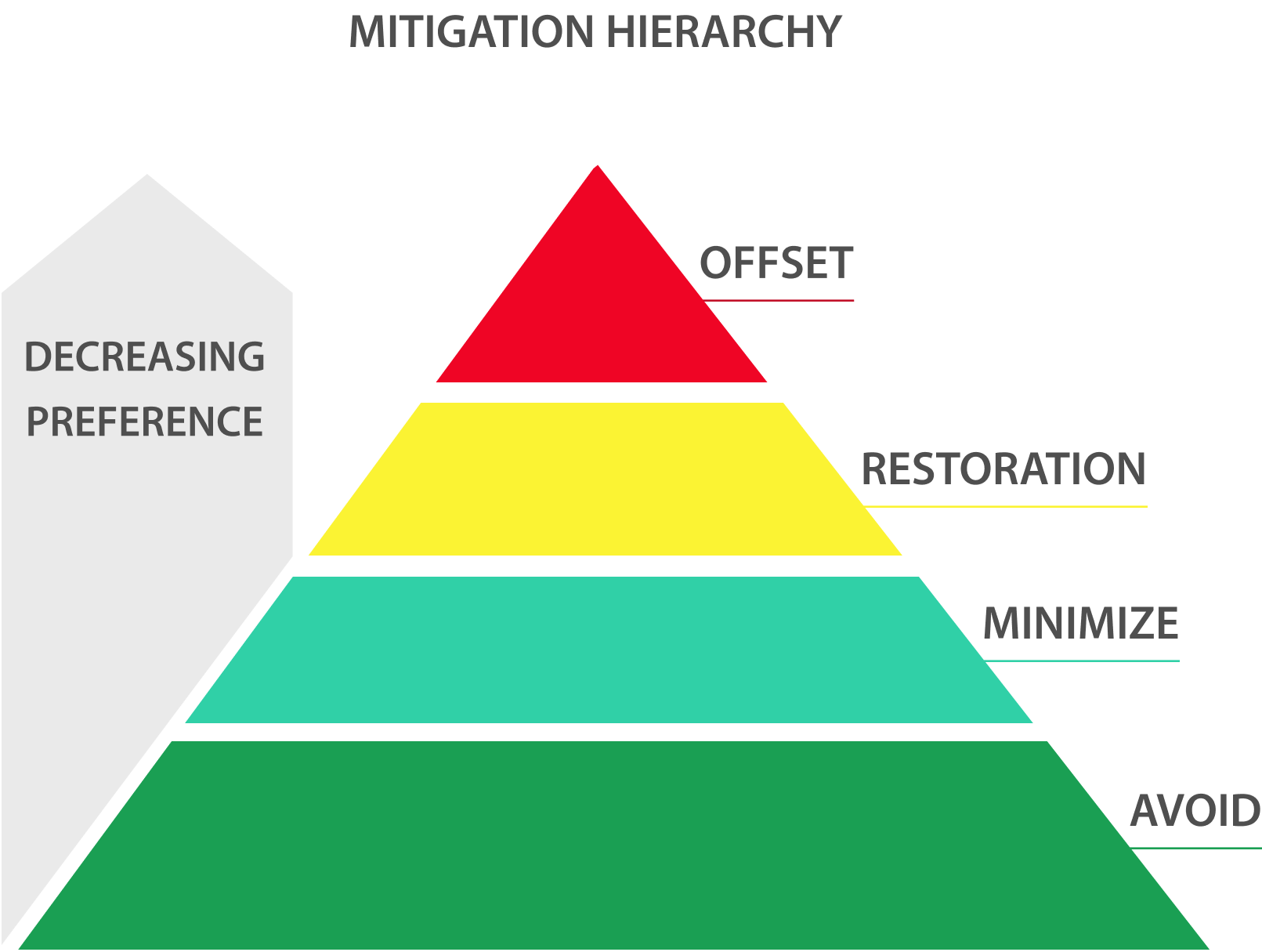
Examples Martabe Gold Mine
Offset project (under development)
Restoration of forest habitat under the site rehabilitation program
Land Clearing Management
Pre-clearing fauna inspections
Avoidance of mine development in Protected Forest
Site selection tailing storage facility
Avoidance
The first and potentially most important step in the mitigation hierarchy is avoidance of impacts by means of decisions made early in the project planning stage. The most likely opportunities for avoidance involve site selection, project design and project scheduling.
Minimization
Minimisation involves reducing “as low as reasonably practicable” biodiversity loss due to impacts that are unavoidable if the project is implemented. There are three classes of controls for minimising project related environmental impacts: physical controls related to the design of infrastructure, operational controls such as rules and procedures, and abatement controls on pollution.
Restoration
Restoration involves measures taken to recover biodiversity loss that has not been addressed through avoidance and/or minimization. The common example in mining is site rehabilitation involving the establishment of habitat similar to that originally cleared. Restoration of habitat is the most important control on biodiversity loss at the Martabe Gold Mine.
Offsets
Biodiversity offsets are measurable conservation outcomes resulting from actions designed to compensate for significant residual adverse biodiversity impacts arising from project development and persisting after appropriate avoidance, minimization and restoration measures have been taken. (IFC Performance Standard 6)
TECHNICAL STUDIES IN SUPPORT OF BIODIVERSITY
Since project commencement, PTAR has implemented a range of technical studies to support development of controls for mitigating biodiversity impacts associated with the Martabe Gold Mine.
FLORA AND FAUNA SURVEYS
The first fauna and flora survey at the Martabe site was conducted in 2003. Since that time, seven additional surveys have been conducted in support of environmental impact assessments and also to meet more specialized needs. The data provided by these surveys is important for development of the site rehabilitation program and the design of a biodiversity offset. All fauna and flora surveys have been conducted by experienced consultant ecologists using standardized methods for data collection and analysis.
ENVIRONMENTAL IMPACT ASSESSMENT
Planning for sustainable development at the Martabe Gold Mine commenced before the construction of the project with the implementation of 38 environmental and social studies in support of the project’s environmental and social impact assessment, known as AMDAL. The AMDAL contains a large number of requirements for the control of impacts over the life of the mine. Impacts on biodiversity are evaluated as part of the Amdal assessment process.
HABITAT MAPPING STUDIES
Two habitat mapping studies have been implemented at the Martabe Gold Mine. Study outcomes included:
- Evaluation and mapping of land cover and habitat types over the project area.
- Evaluation of impacts on habitat associated with the project.
- Recommendations for improving biodiversity management at the site.
Specifically, the results of these studies are important for the design of a biodiversity offset for the site.

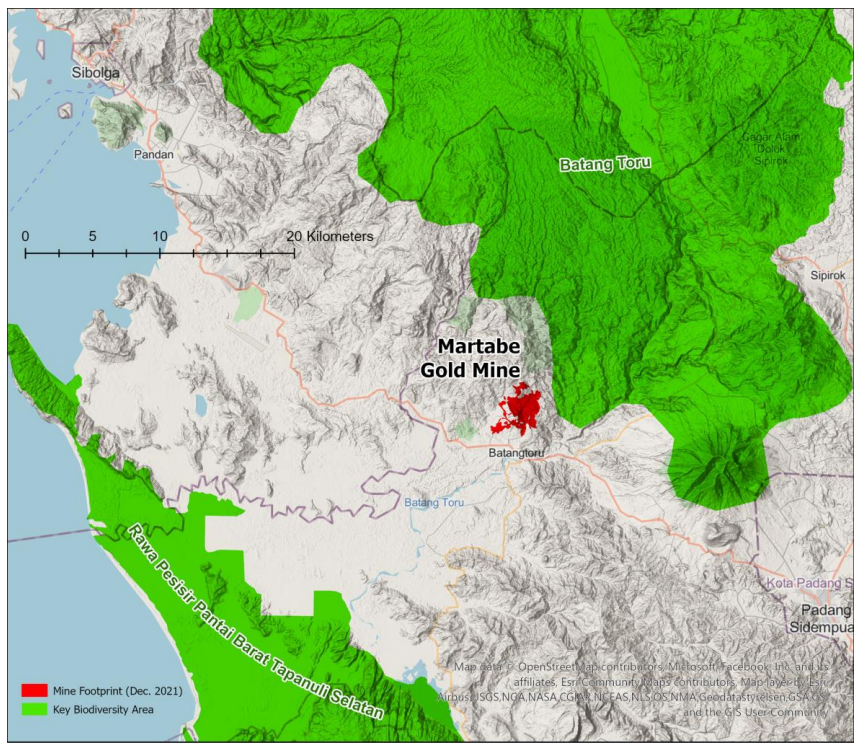

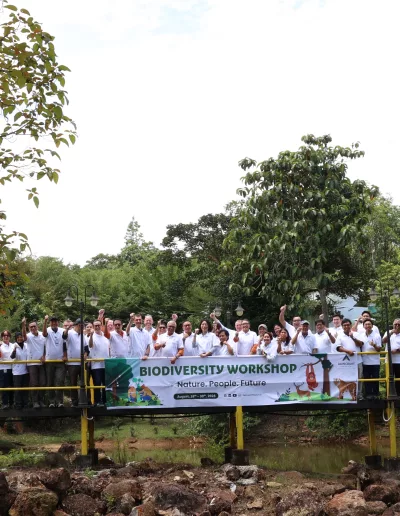
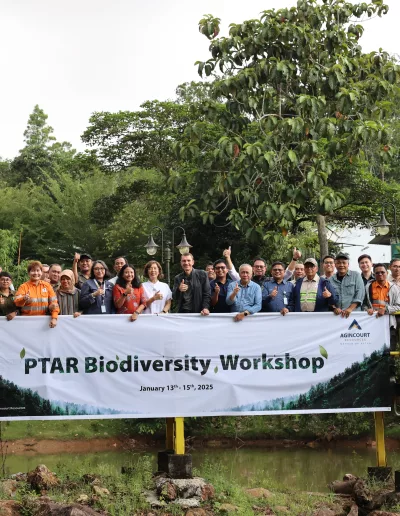
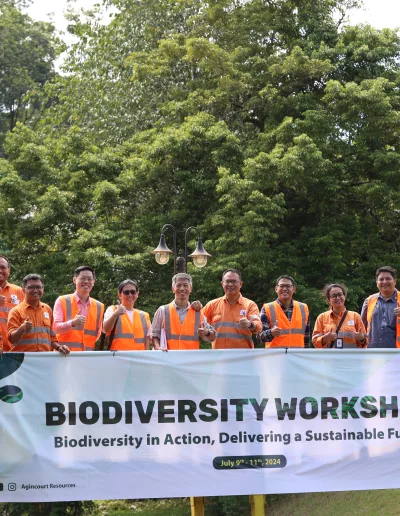
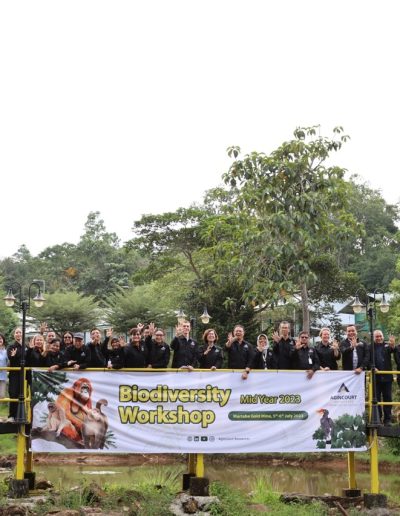
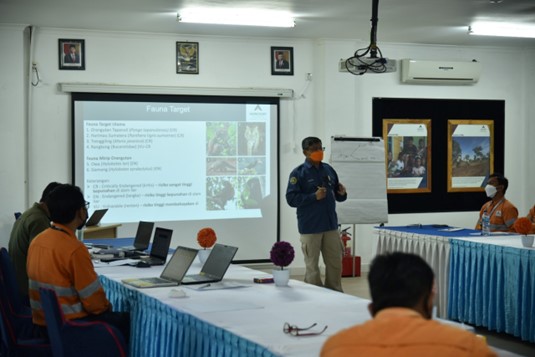
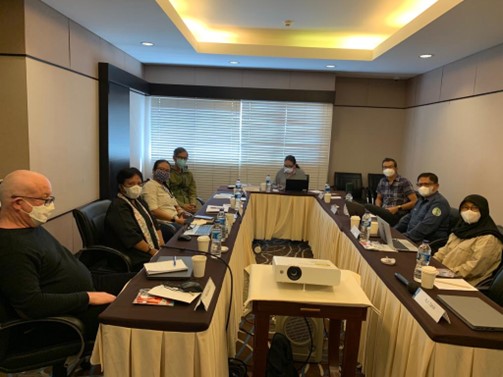
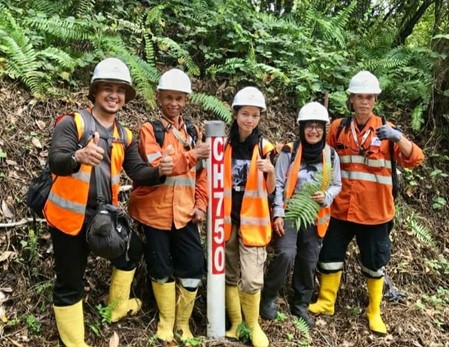

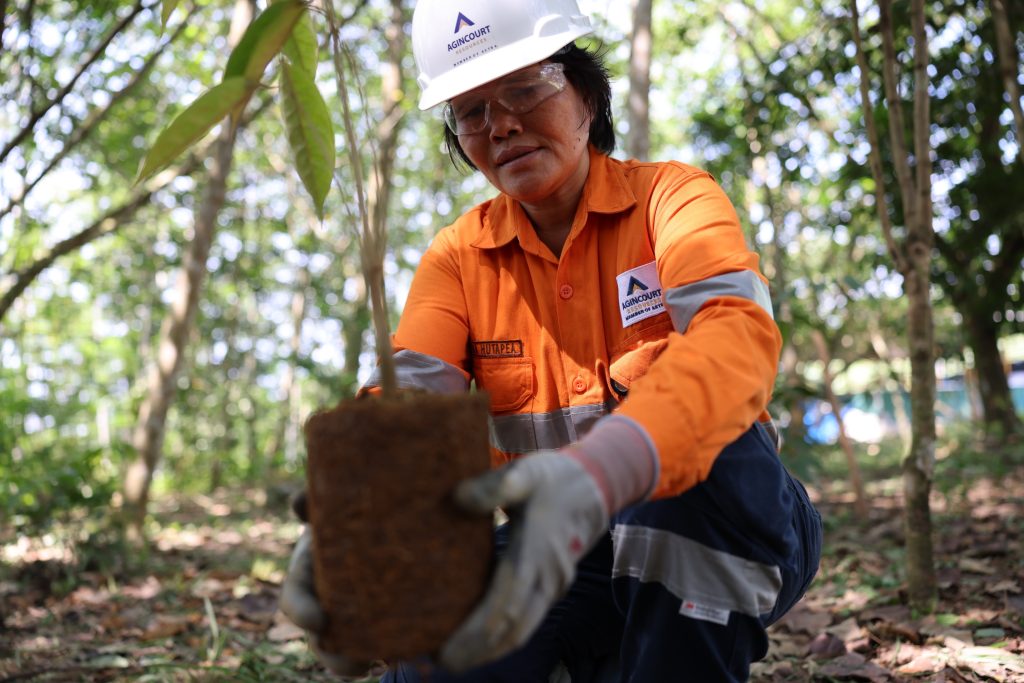
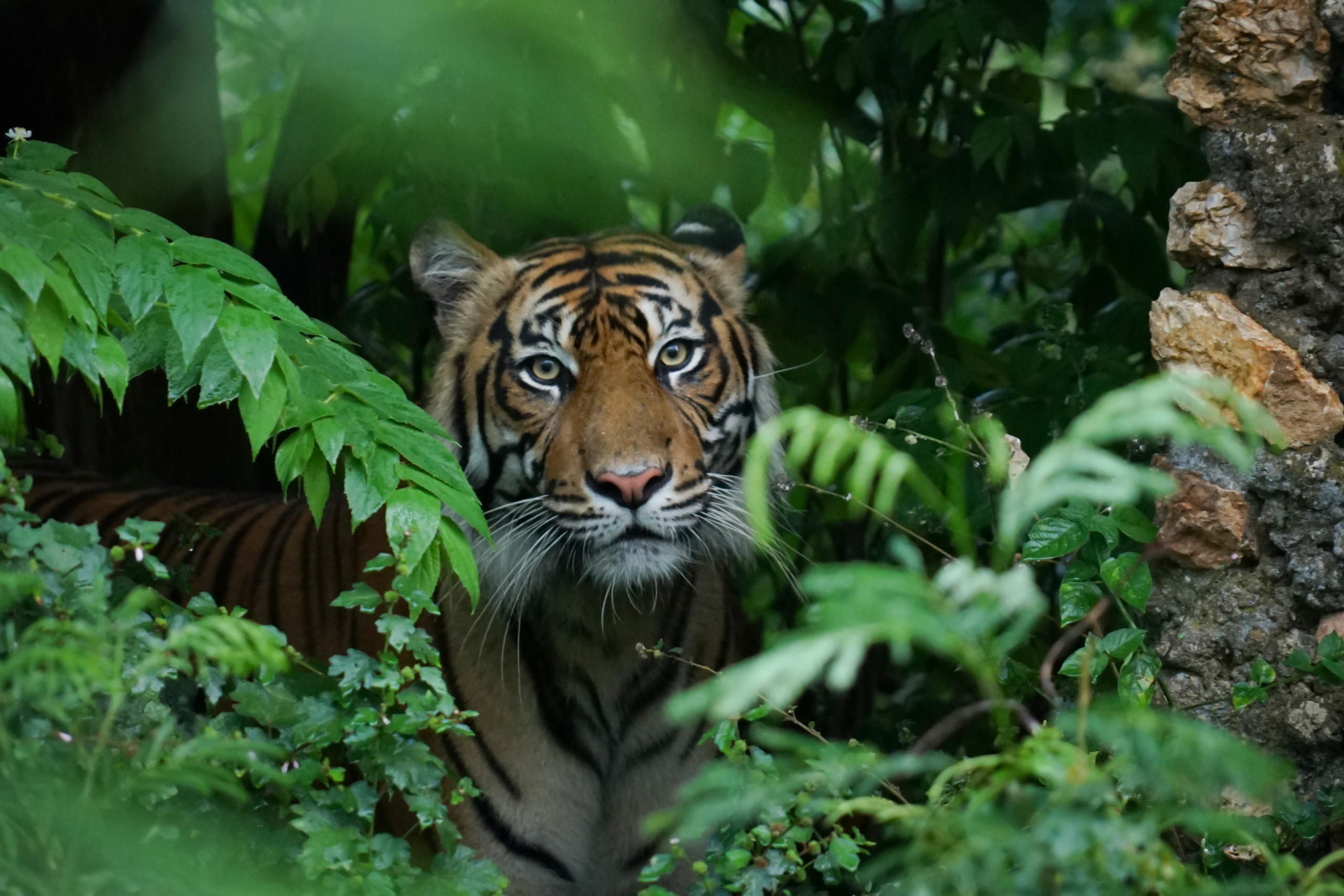
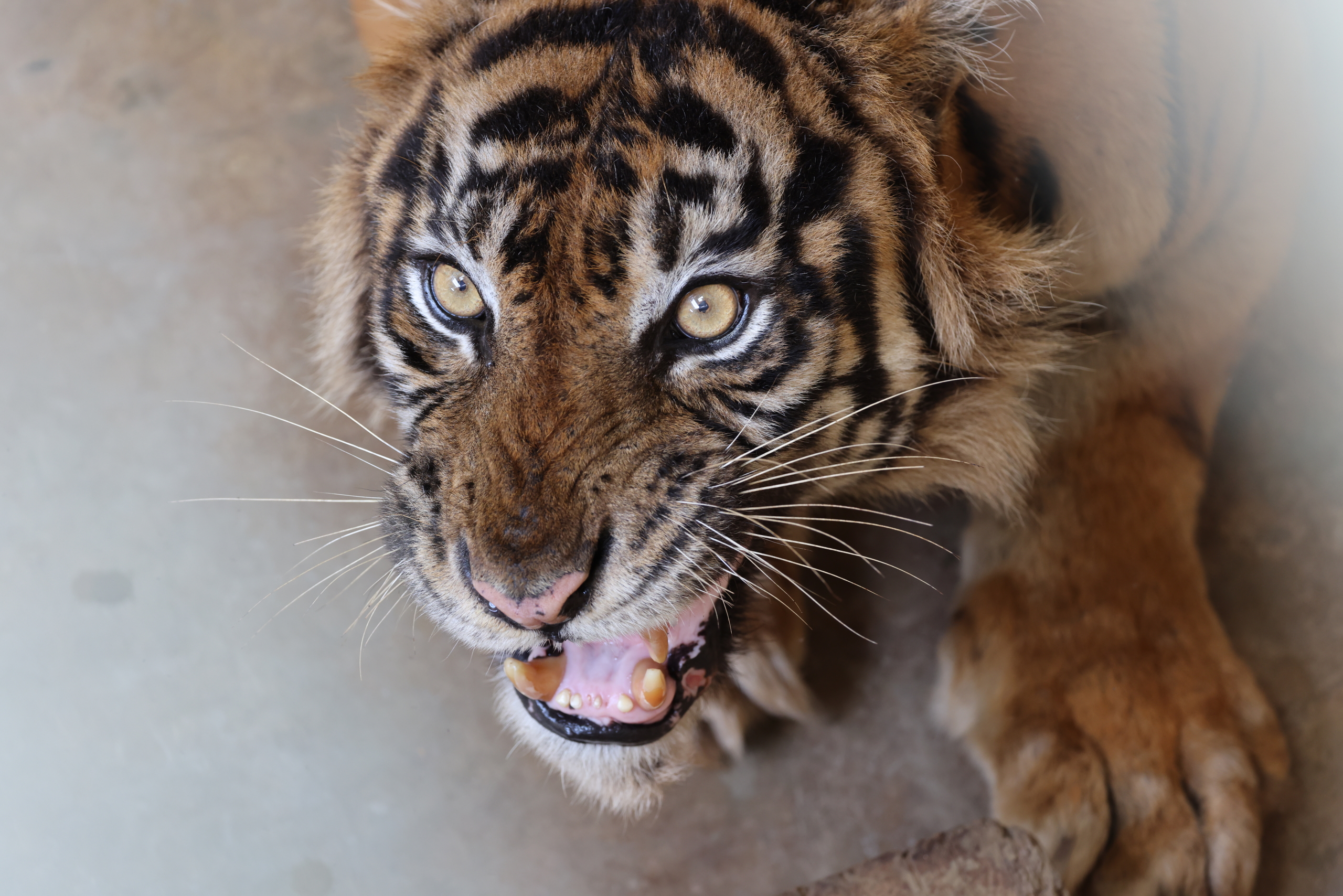
Dr. Rondang Siregar is a Senior Biodiversity and Conservation Planning Consultant at Daemeter Consulting. She earned her PhD from the University of Cambridge, UK. Dr Rondang has been working on Biodiversity and Conservation issues for over 20 years, focusing on primate and habitat conservation, orangutan rehabilitation/reintroduction, human and orangutan conflict resolution, wildlife/orangutan trade, protected area, ecotourism, mining and biodiversity and climate change. She was formerly a member of the IUCN Primate Specialist Group and co-vice Chair, the Section for Human-Primate Interactions.